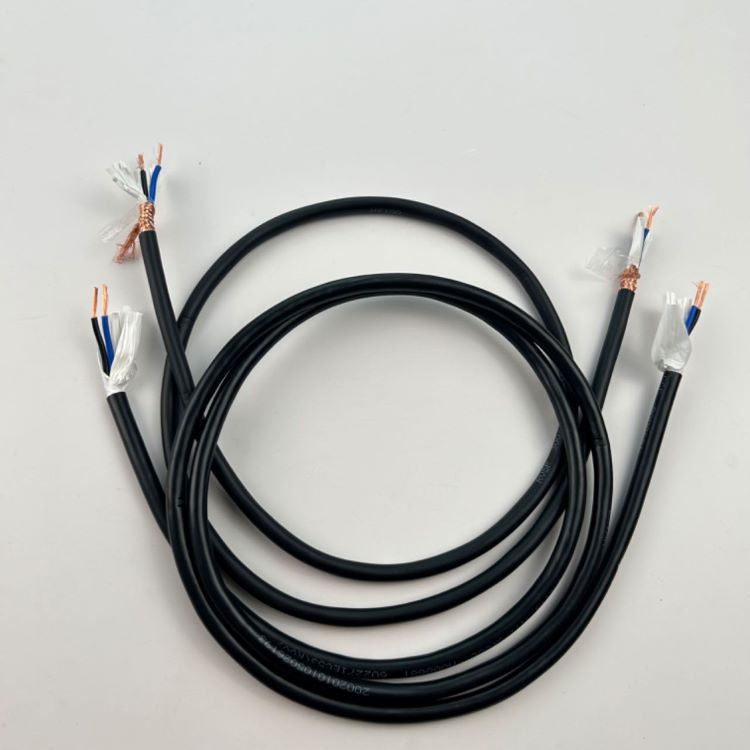|
3core |
|||
|
3*1.5mm² |
Conductor Resistance: Max(Ω/Km,20 degree ) |
Less than or equal to 13.3 |
|
|
32*0.2mm |
|||
|
8.5±0.2mm |
|||
|
-20 degree -- + 80 degree |
300/500V |
Size and Dimensions – 2 core
|
Conductor Max. Resistance at 20 degree (ohm/km) |
|||||
|
3*0.5 |
28*0.15 |
2.30 |
0.6 |
6.6 |
39 |
|
3*0.75 |
42*0.15 |
2.50 |
0.8 |
7.4 |
26 |
|
3*1.0 |
32*02 |
2.60 |
0.8 |
7.6 |
19.5 |
|
3*1.5 |
30*0.25 |
3.10 |
0.9 |
8.5 |
13.3 |
|
3*2.5 |
49*0.25 |
3.80 |
1.1 |
10.8 |
7.98 |
|
3*4.0 |
56*0.28 |
4.30 |
1.2 |
12.1 |
4.95 |
|
3*6.0 |
84*0.29 |
4.80 |
1.2 |
13.1 |
3.3 |

When choosing a PVC cable, there are many factors to consider to ensure that you are purchasing a high-quality product that meets your needs. Here are some specific choice suggestions:
1. Check the PVC material
Material quality: High-quality PVC materials should have good insulation properties, chemical resistance, mechanical properties and flame retardant properties. When selecting, you can observe the surface thickness, uniformity and whether there are defects of the cable insulation layer, which can reflect the quality of PVC material.
Environmental performance: Considering environmental protection and sustainable development, halogen-free, low-smoke and flame-retardant PVC materials should be selected. This material will not release toxic gases in case of fire, making it safer and more environmentally friendly.
2. Selection of conductor materials
3. Consideration of insulating layer thickness
The insulation layer is a key part to protect the conductor from the external environment. When selected, you should ensure that the thickness of the insulation layer is moderate and uniform to ensure that the wires are not damaged by wear and tear during long-term use. Thicker insulation provides better protection, but it also increases the overall diameter and weight of the cable. Therefore, the thickness of the insulating layer should be weighed according to the specific application scenarios and needs when selecting.
4. Selection of specifications
The specifications of PVC cables include parameters such as length, wire diameter (conductor cross-sectional area), etc. These parameters determine the load-bearing capacity and applicable scope of the cable. When selecting, appropriate specifications should be selected according to specific application scenarios and needs. For example, in indoor wiring occasions such as homes or offices, you can choose cables with moderate length and small wire diameter to save space and cost; In the process of long-distance power transmission in the power system, it is necessary to choose cables with longer length and larger wire diameter to ensure the stability and reliability of power transmission.
To sum up, when choosing PVC cables, you need to consider many factors such as material, conductor material, insulation layer thickness, specifications, application scenarios and environmental conditions. By considering these factors comprehensively and weighing and selecting according to specific needs, you can ensure that you can purchase high-quality PVC cables that meet your needs.



Clibeanna Te: multi-conductor 1.5mm electrical cable, China multi-conductor 1.5mm electrical cable manufacturers, suppliers, factory









